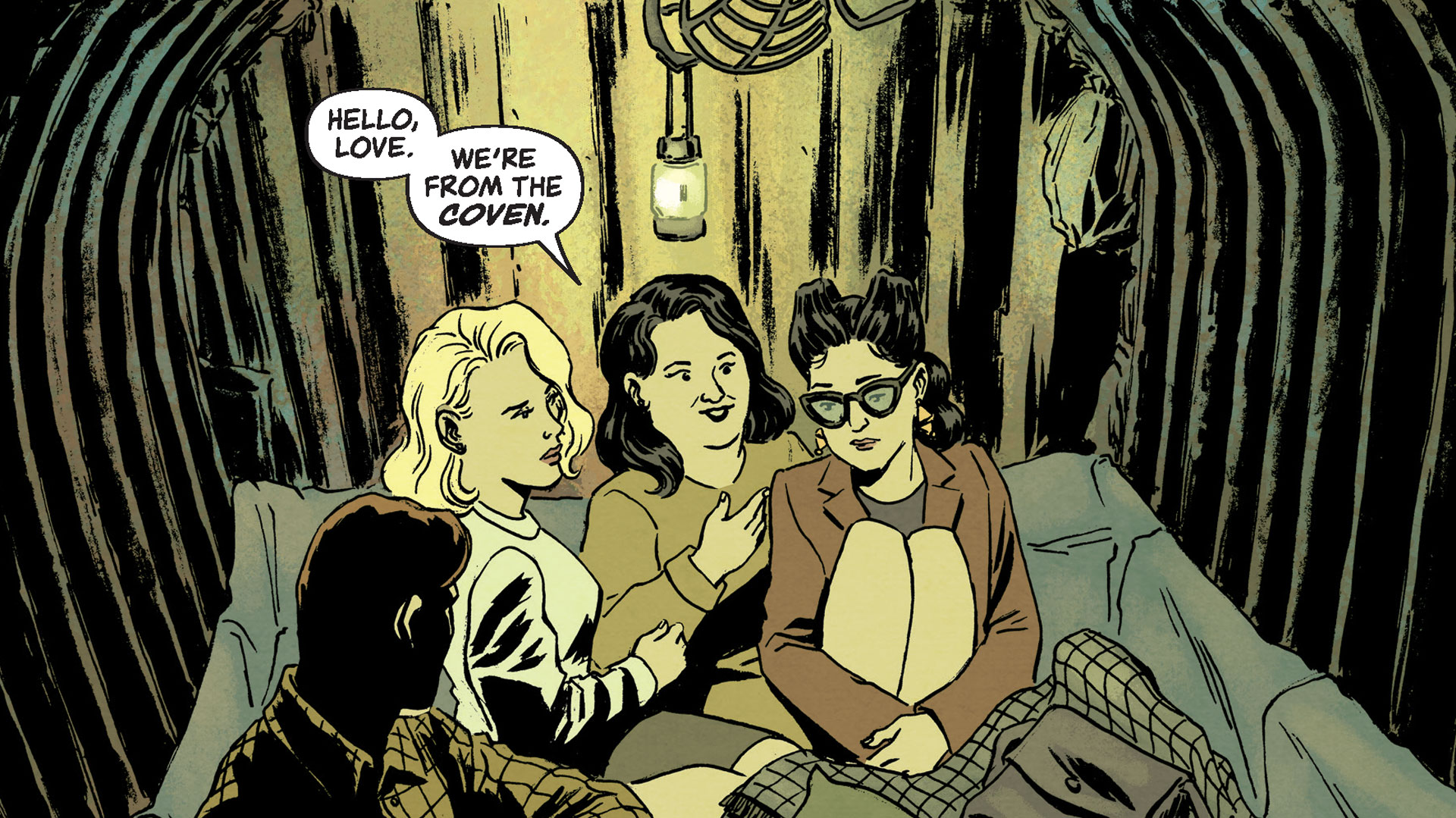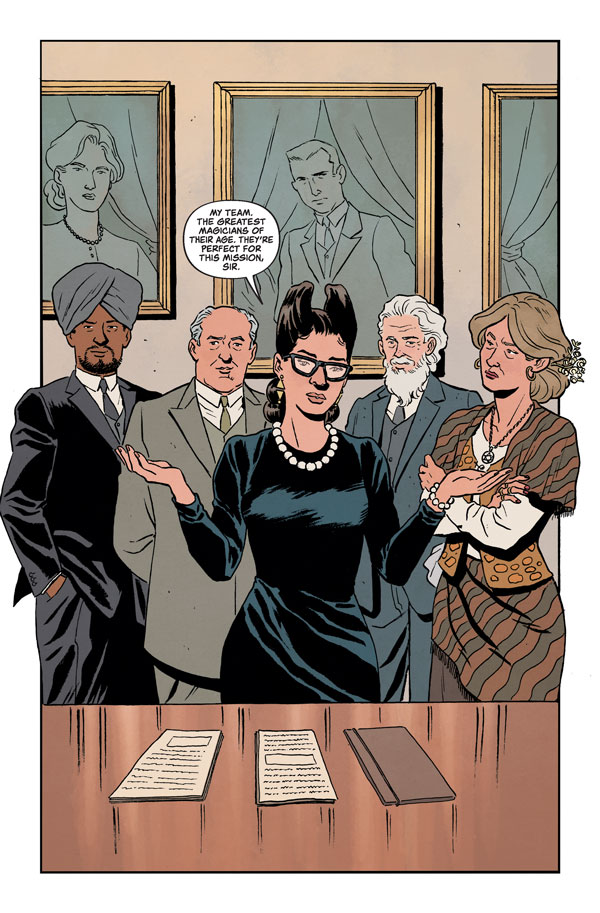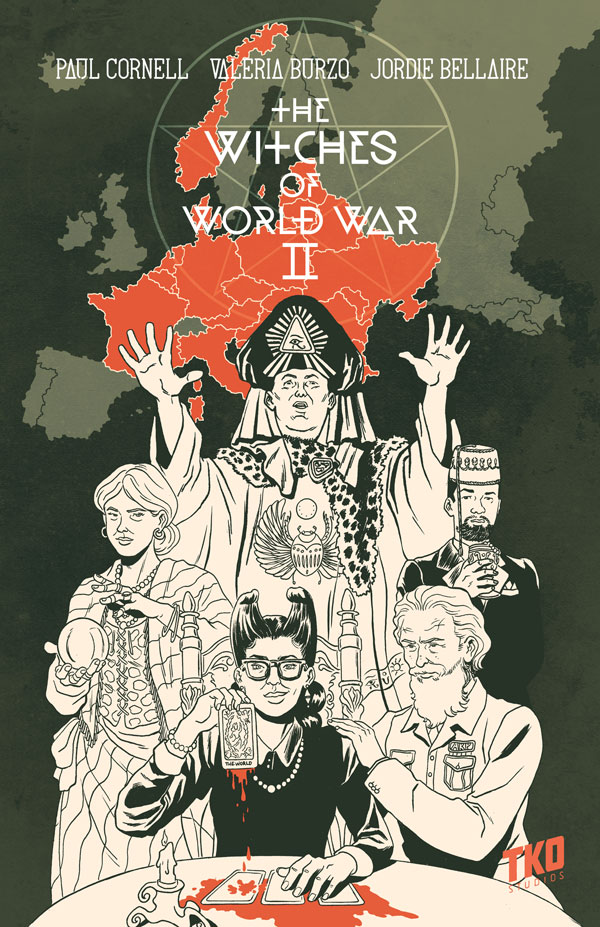My new graphic novel The Witches of World War Two is historical fiction about a group of amazing real people, all practitioners of magic who lived in the UK during the war.
Doreen Valiente (1922-1999) developed an interest in the occult founded upon a childhood incident where she felt she’d protected her mother from abuse. This interest led, over decades, to Valiente becoming perhaps the central figure of modern witchcraft, someone who did more than anyone else to shape Wicca into the movement it is today.
The latest research concerning Valiente – who at the time of our story still went by her birth name, Dominy – indicates that she didn’t actually work as a translator at Bletchley Park, as has been widely believed, but she did spend long periods out of the historical record around then, and never talked about what happened. [It’s possible she was a spy.]
In real life, she didn’t meet our other hero Gerald Gardner (1884-1964) until the early 1950s. Gardner, through his interactions with the New Forest Coven (who attempted a series of magical workings to defend Britain from invasion) had discovered a tradition the coven members called ‘Wica’, which he strove to popularise.
Valiente and Gardner’s friendship and work together, their building of covens and organisations, and their publishing careers – plus their subsequent battles and split over how public the business of magic should be – this creative synergy was how modern Paganism was created.
In reality, Gardner didn’t meet Aleister Crowley (1875-1947) until the year of Crowley’s death. Crowley initiated Gardner into his Ordo Templi Orientis, and effectively made him his deputy. More has been written about Crowley than any other figure in the history of magic, and, uniquely among my cast of characters, I feel he might have enjoyed the liberties I’ve taken with his timeline.











